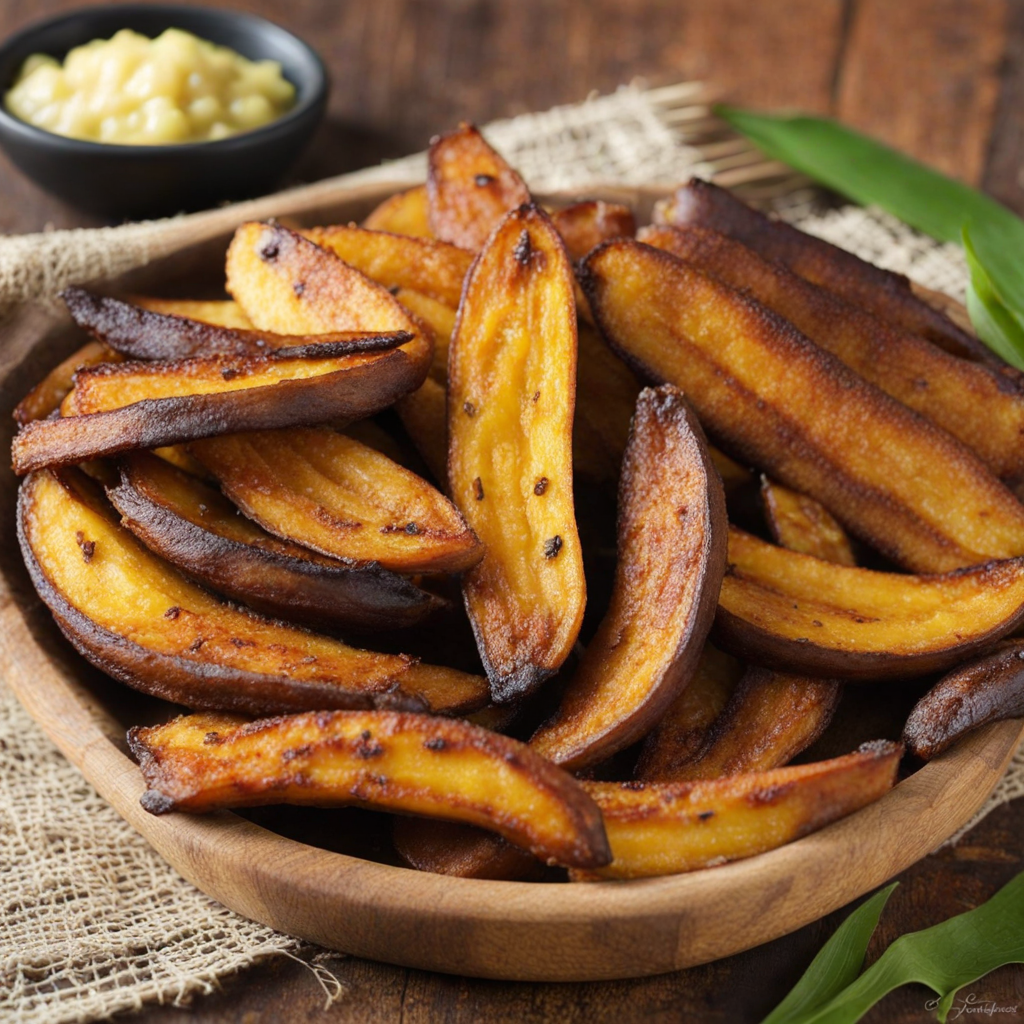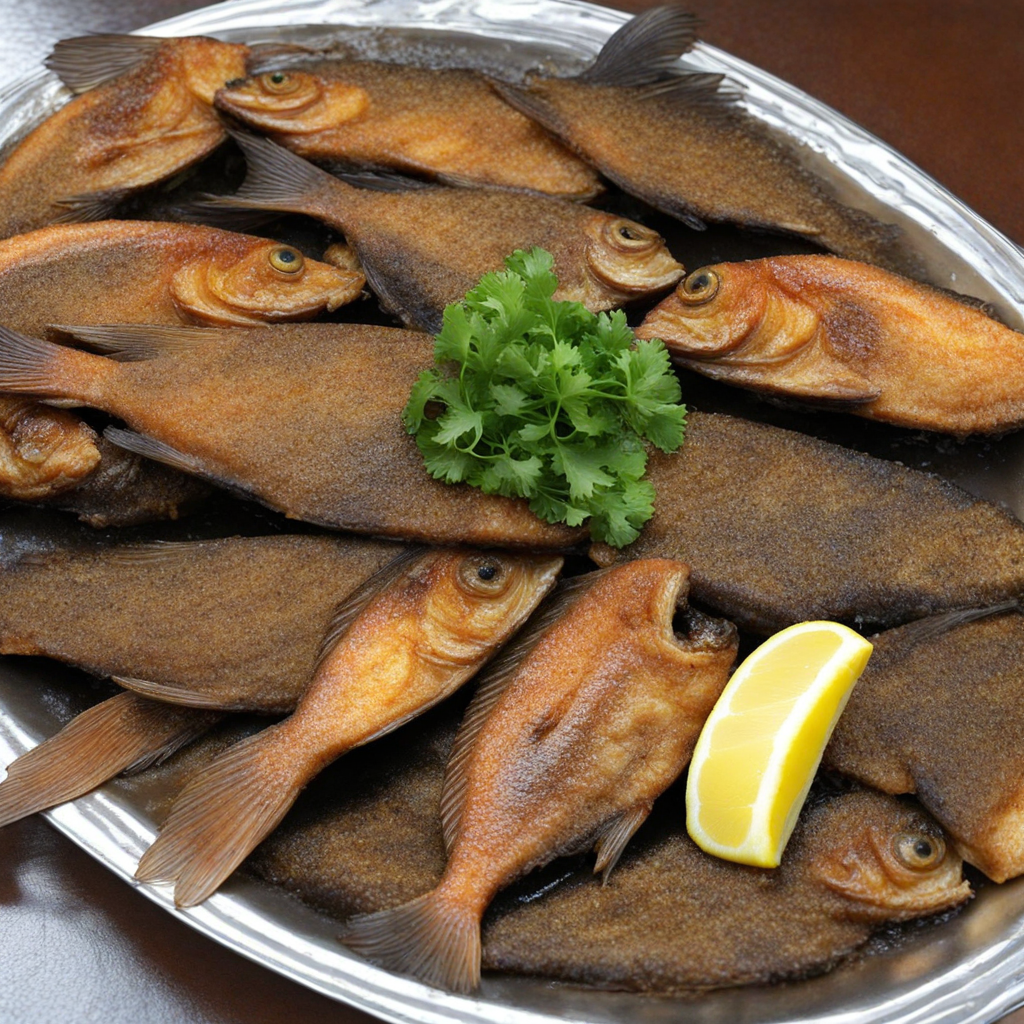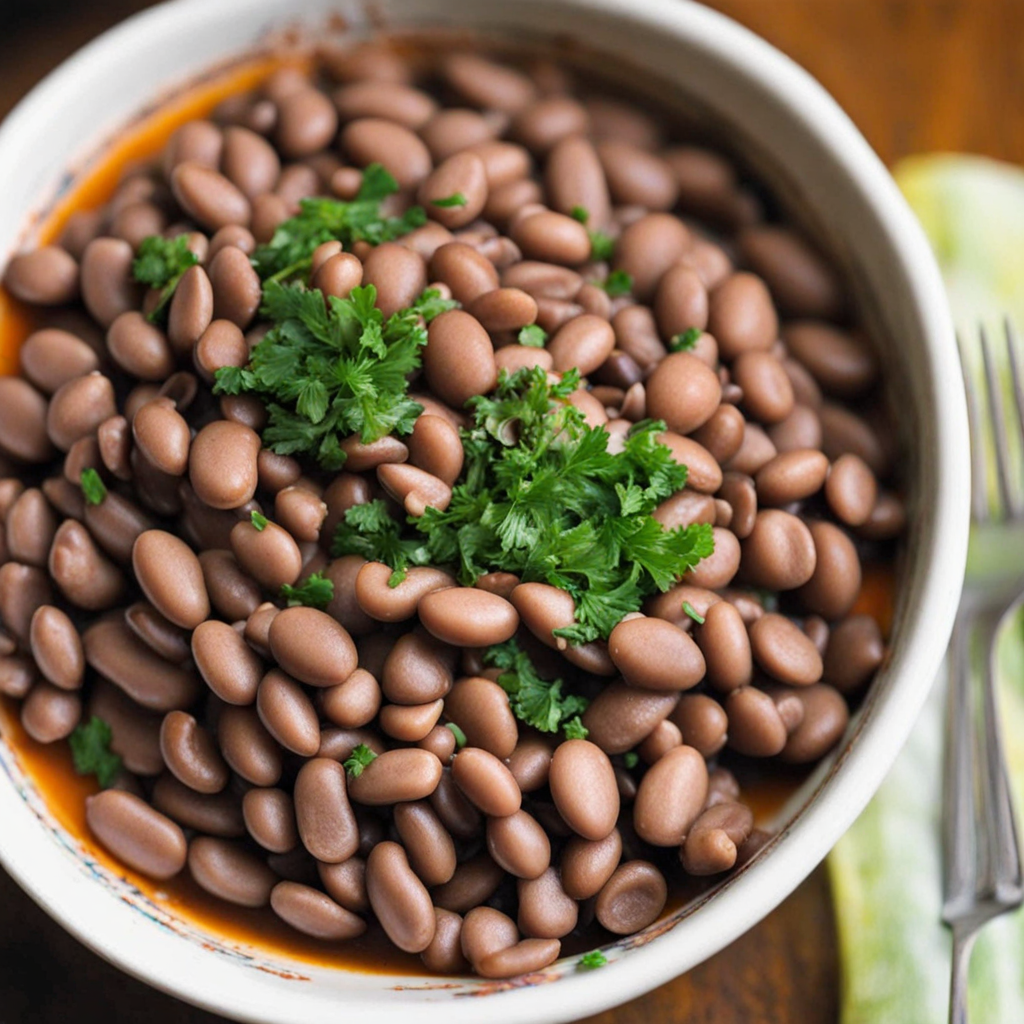Fried Plantains
Fried plantains are a beloved staple in Sierra Leone, offering a delightful blend of sweet and savory flavors that tantalize the taste buds. These vibrant yellow fruits are sliced into thick or thin pieces, depending on personal preference, and then fried to golden perfection. The cooking process caramelizes the natural sugars in the plantains, creating a crispy exterior while ensuring the inside remains tender and creamy. Each bite delivers a satisfying contrast in texture, making them an irresistible snack or side dish. In Sierra Leone, fried plantains are often enjoyed alongside rice dishes, stews, or grilled meats, elevating the overall meal with their unique sweetness. They are typically seasoned with a hint of salt, which enhances their flavor profile, but variations can include spices or herbs for an added kick. The versatility of fried plantains allows for creativity in their presentation, whether served as a simple accompaniment or dressed up with sauces and toppings to create an impressive dish. Beyond their delicious taste, fried plantains are also a source of nutrition, packed with vitamins A, C, and B6, as well as potassium and dietary fiber. This makes them not only a satisfying option for those looking to explore new culinary experiences but also a wholesome addition to any diet. Whether enjoyed on their own as a snack or incorporated into a more elaborate meal, fried plantains from Sierra Leone promise a delightful journey into the heart of West African cuisine.
How It Became This Dish
The History of Fried Plantains in Sierra Leone: A Culinary Journey Fried plantains, a beloved staple in many West African cuisines, hold a special place in the hearts and palates of Sierra Leoneans. This dish, characterized by its sweet and savory flavors, crispy texture, and vibrant golden hue, is not merely a culinary delight but also a symbol of cultural identity and resilience. Understanding the origins, cultural significance, and evolution of fried plantains in Sierra Leone reveals a rich tapestry woven from the threads of history, agriculture, and social customs. Origins of Plantains Plantains are part of the banana family and are believed to have originated in Southeast Asia before making their way to Africa through trade routes. It is widely accepted that plantains were introduced to West Africa by Arab traders around the 7th century, and their cultivation spread rapidly across the region. The tropical climate of Sierra Leone, with its fertile soil and abundant rainfall, proved conducive to growing these versatile fruits. Over centuries, plantains became a staple food for many West African communities, including those in Sierra Leone. The cultivation of plantains in Sierra Leone can be traced back to ancient agricultural practices. Indigenous peoples, such as the Temne and Mende, embraced this crop, integrating it into their daily diets. The plantain's resilience and adaptability made it an essential food item, capable of thriving in various growing conditions and providing sustenance throughout the year. Cultural Significance Fried plantains, or "dodo," as they are locally known, are much more than just a dish; they are steeped in cultural significance. In Sierra Leone, plantains are often served alongside rice, stews, or grilled meats, forming a vital part of communal meals. They are commonly enjoyed during celebrations, family gatherings, and festive occasions, embodying the spirit of togetherness and shared experience. The preparation of fried plantains is often a communal activity, especially during large family gatherings or community events. Women, who traditionally bear the responsibility of food preparation, gather to peel, slice, and fry the plantains, sharing stories and laughter as they work together. This communal aspect of cooking reinforces social bonds and emphasizes the importance of community in Sierra Leonean culture. Fried plantains also hold a significant role in Sierra Leone's culinary heritage. They embody the fusion of indigenous cooking practices with influences from various cultures, including Portuguese, British, and Americo-Liberian settlers. This blend of culinary traditions has enriched the way fried plantains are prepared and enjoyed, making them a versatile side dish that complements an array of flavors and cuisines. The Preparation and Varieties of Fried Plantains The process of making fried plantains is relatively simple yet requires skill to achieve the perfect balance of sweetness and crispiness. The plantains are typically sliced diagonally into thick pieces, which are then fried in hot oil until golden brown. There are variations in preparation depending on regional preferences. Some Sierra Leoneans prefer their plantains to be fried until fully caramelized, resulting in a sweet and soft texture, while others favor a slightly crispy exterior with a firmer bite. The plantains may be seasoned with salt or served with a spicy dipping sauce, enhancing their flavor profile. In addition to the classic fried plantains, variations exist across different communities. For instance, some might incorporate spices or herbs into the frying process, while others may serve them with a drizzle of honey or a sprinkle of sugar to accentuate their natural sweetness. The adaptability of fried plantains allows for creativity in the kitchen, leading to unique interpretations that reflect local tastes and preferences. Development Over Time Throughout the years, the significance of fried plantains in Sierra Leone has evolved, influenced by historical events and social changes. The civil war that ravaged the country from 1991 to 2002 had a profound impact on the food culture, including the role of fried plantains. During this tumultuous period, access to food became limited, and traditional agricultural practices were disrupted. However, despite these challenges, the resilience of the Sierra Leonean people shone through. Fried plantains emerged as a comfort food, symbolizing hope and continuity amidst hardship. Their accessibility and affordability made them a vital source of nutrition during times of scarcity. As communities rebuilt after the war, the cultural importance of fried plantains endured, serving as a reminder of the past and a source of pride for Sierra Leoneans. In contemporary Sierra Leone, fried plantains continue to be a prominent feature of the culinary landscape. They have found their way into urban restaurants and modern eateries, appealing to both locals and tourists. Chefs often experiment with new flavors and presentations, showcasing fried plantains in innovative ways while still honoring traditional methods. This evolution reflects a broader trend in West African cuisine, where traditional dishes are celebrated and reimagined for modern palates. Global Influence and Fusion Cuisine As globalization expands, the popularity of fried plantains has transcended the borders of Sierra Leone. Internationally, they are embraced as a key component of Afro-Caribbean cuisine, appearing in dishes across the Caribbean, Latin America, and beyond. The versatility of fried plantains has led to their incorporation into various culinary contexts, ranging from tacos to gourmet appetizers. Furthermore, the rise of social media has facilitated the sharing of recipes and cooking techniques, allowing culinary enthusiasts to explore and recreate fried plantains in their own kitchens. This cross-cultural exchange has fostered a greater appreciation for the dish and its origins, highlighting the importance of preserving traditional foodways while embracing innovation. Conclusion Fried plantains are more than just a delicious dish; they encapsulate the history, resilience, and cultural identity of Sierra Leone. From their origins in Southeast Asia to their prominent place in Sierra Leonean cuisine, fried plantains represent a rich heritage shaped by agricultural practices, communal bonds, and historical events. As they continue to evolve and adapt in a globalized world, fried plantains remain a beloved symbol of Sierra Leone's culinary landscape, connecting past and present and celebrating the enduring spirit of its people.
You may like
Discover local flavors from Sierra Leone







